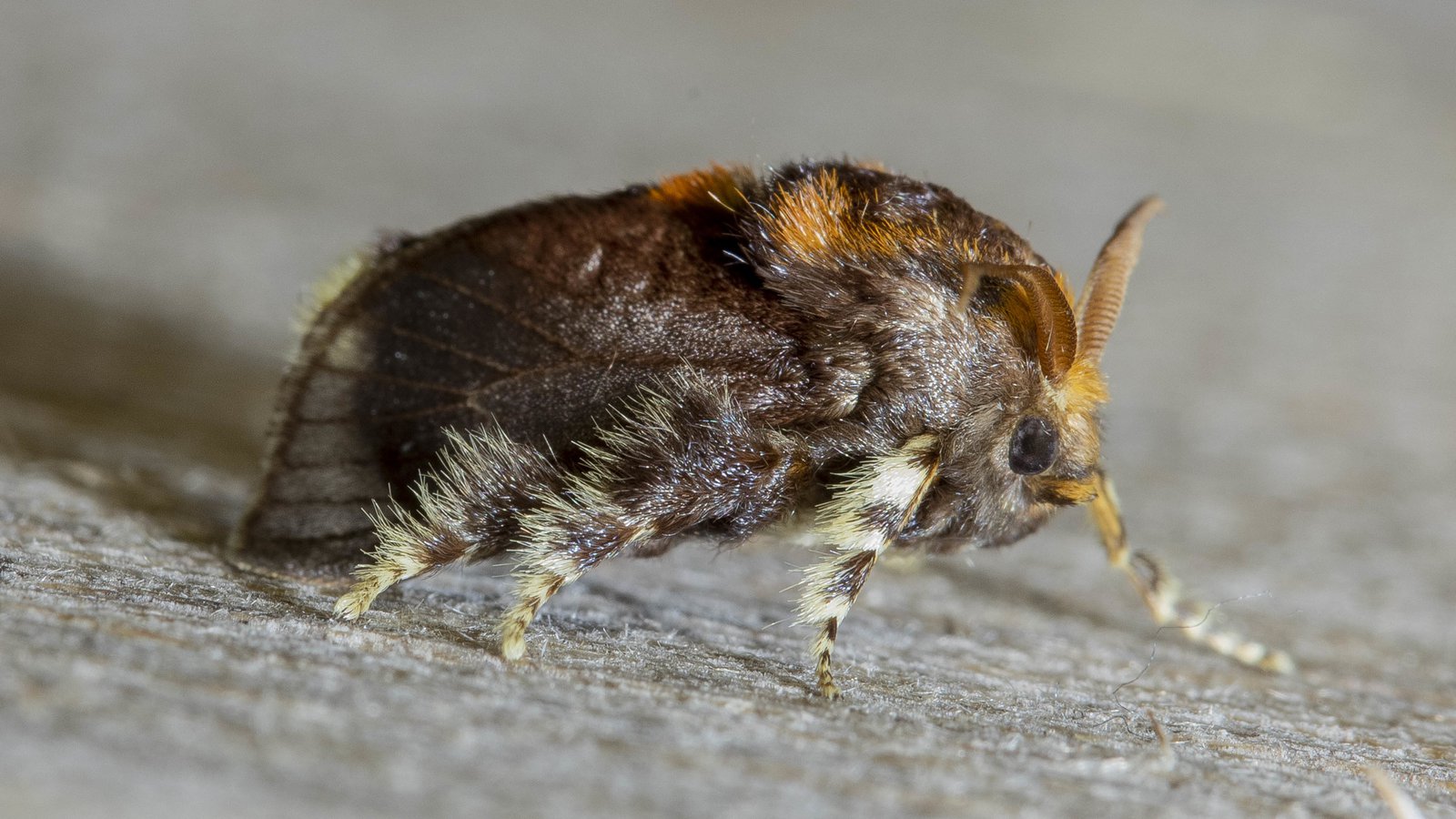Cup moths
Chinese Junks, Battleships, Warships
Introduction
Cup moths are named for the cup-like cocoons that their caterpillars spin. Their slug-like and brightly coloured caterpillars have also been given various names such as Chinese Junks, Battleships or Warships because of their shape and their 'armaments' - stinging spines that cause irritation if touched.
What do cup moths look like?
Identification
The adult moths of the Family Limacodidae are brown and heavily-built, with marbled forewings. Many moths in this family rest on a twig with their bodies pointing upwards and their large wings folded down over their backs, overlapping the twig like a tent.
The stout, slug-like caterpillars are usually a pale green, and may be marked with purple or brown, depending on the species. Each end of the caterpillar is often armed with clusters of sharp spines. When the caterpillar is disturbed, these spines are erected, but at rest they are retracted inside tubes. The spines cause intense stinging if they touch the skin, and may even cause large lumps to appear.

https://creativecommons.org/licenses/by-nc-nd/4.0/
A common Sydney species is the Mottled Cup Moth (Doratifera vulnerans), whose caterpillars feed on Eucalyptus, Melaleuca, guava and apricot. The 2 cm long caterpillars have four knobs at each end with expandable crowns of stinging spines. The caterpillars are grey-green to red with a 'skirt' of green spikes along the sides of their bodies and a yellow and green 'saddle' on the middle. The adult moth has a dark brown body with light brown, mottled wings that are about 4 cm across.
The Painted Cup Moth Doratifera oxleyi is common in central New South Wales and its caterpillars may be found in great numbers feeding on the leaves of the Red Gum (Eucalyptus camaldulensis). The caterpillars are green, with a skirt of fleshy spikes that are red to clear in colour. Two shield-shaped markings at each end of the upper body each surround four yellow-tipped knobs from which stinging hairs can be everted if disturbed. The adult moths are dimorphic (the sexes differ), The females are heavy-set orange-bodied moths and have brown, pale-edged wings (5 cm across). The males are smaller, have a hairy orange body with a white tip on the abdomen, white furry legs and underside, and bluish transparent wings (2 cm across).
What is the life cycle of cup moths?
Life history cycle
Adult cup moths lay clusters of eggs on the leaves of food plants such as Eucalyptusand other trees, and often cover them with hairs from their own bodies.
When the caterpillars hatch, they begin to feed in groups on the surface of a leaf. As they mature, they move off to feed on a whole leaf each.
When the cup moth caterpillar is ready to pupate, it spins a hard, smooth oval or pear-shaped cocoon (the 'cup') attached by the base to a twig. The moth emerges by pushing off a circular cap or lid.

https://creativecommons.org/licenses/by-nc-nd/4.0/


